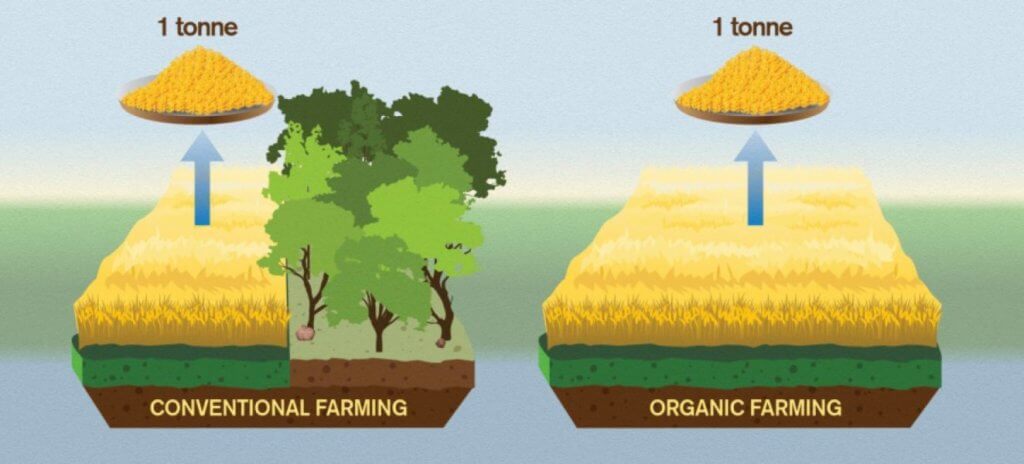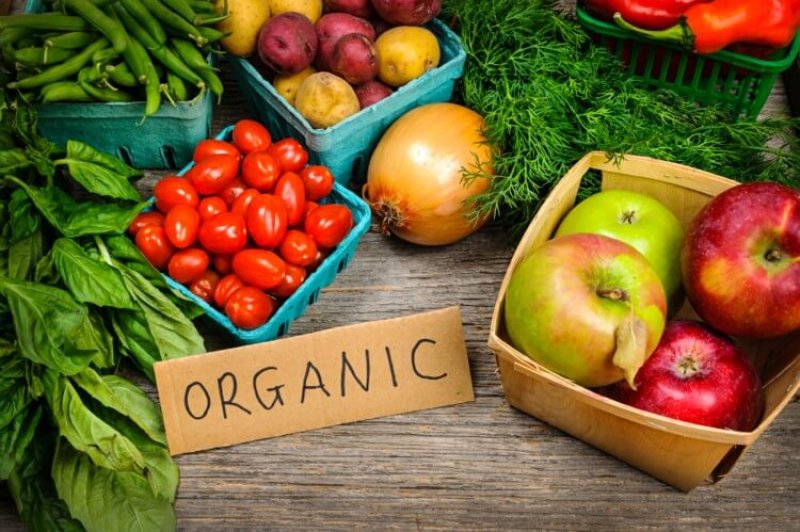[Editor’s note: This article is part two of a four-part series on the organic food industry’s reaction to the introduction of gene-edited crops. Read part one, part three and part four.]
While most organic food producers view rejection of technology as a way to set their “natural” products apart from the conventional alternatives, they have miscalculated the importance of plant breeding advances and may put themselves at a severe competitive disadvantage as a result. NBTs are beginning to radically improve food production, yielding products that appeal to both consumers and farmers. This feat cannot be replicated by organic growing practices.
The gene-editing revolution
New breeding techniques encompass dozens of gene-editing and gene-silencing technologies that allow scientists to make very specific modifications to the genomes of food crops and animals, endowing them with a variety of useful traits. These tools were in development for decades and finally burst onto the scene in 2005 when scientists used the technology to edit tobacco plants. Since then, researchers worldwide have begun developing hundreds of crops using these technologies, some of which have already hit the market.
The agricultural advances now within reach are almost startling. New plant breeding technologies, CRISPR being the best known, have the potential to eradicate serious plant diseases, eliminating a large percentage of the crop losses that farmers suffer every year.

The bacterial disease citrus greening, for example, has devastated the orange industry in Florida. From a high of 244 million boxes in the 1997-1998 growing year, orange production plunged to 94.2 million boxes in 2015-2016. It is estimated that citrus greening reduced revenues from orange and grapefruit production by $4.64 billion since the disease was detected, costing $1.76 billion in labor income and more than 3,400 jobs. Wheat rust in the US likewise costs farmers an estimated $5 billion in lost crops every year.
Scientists are working on gene-editing solutions to both diseases. With respect to citrus greening, scientists have determined which genes are “switched on” to express proteins that cause the disease. This insight will hopefully enable them to utilize gene-editing technology to either remove or silence the responsible genes. Scientists have also discovered wheat genes that are resistant to the rust pathogen. Gene-editing might be used to “switch on” these genes, potentially endowing wheat with immunity to the disease.
NBTs will also advance the development of biofortified crops to help meet the nutritional needs of developing nations, as well as drought-tolerant crops that will help agriculture adapt to the hostile impacts of climate change. The environmental benefits don’t stop there, however. Non-browning fruits and vegetables, such as the Arctic Apple, will help tackle the world’s food waste problem. And gene-edited crops capable of fixing nitrogen from the atmosphere could reduce the use of harmful chemical fertilizers.
Organic industry shoots itself in the foot
Critics of gene-editing have simply recycled the same arguments they leveled at GMOs beginning in the 1990s. In doing so, they have repeatedly ignored evidence that gene-edited food is safe for human and animal consumption and poses no threat to the environment. Instead, the organic food industry has conjured up non-existent dangers and employed scaremongering tactics to frighten the public. According to Emma Hockridge, head of policy, farming and land use at the UK’s Soil Association, a pro-organic NGO:
Scientific research has long shown that these new gene-editing technologies give rise to similar uncertainties and risks as GM always has …. We have always been clear that these new plant breeding techniques are GMOs and therefore are banned in organic farming and food…The outcome of gene-editing is to manipulate and alter the genome in a laboratory to make a new organism. This is the very definition of genetic engineering, and gene-editing risks introducing similar uncertainties and unintended consequences as genetic modification of DNA.
The Soil Association is not alone, either. Virtually all the major organic food organizations have indicated that NBTs will never be allowed in the cultivation of organic crops. As the International Federation of Organic Agriculture Movements, which represents affiliates in 120 countries, explained:
The rapid development and dissemination of new genetic engineering techniques in recent years brings a level of interference in the genetic make-up of the planet’s biodiversity, with consequences that remain poorly understood let alone evaluated, which society has never seen before …. [I]t is not possible to know the full impact of any given genetic engineering process; most of these techniques may trigger numerous off target effects at different steps of their production process and risk is inherent.”
This consensus opposition to gene editing explains why the USDA’s National Organic Standards Board voted in 2016 and 2017 to exclude all gene-edited crops from organic certification, viewing the decision as a way to differentiate its products and appeal to biotech-wary consumers. But this marketing strategy doesn’t make as much sense as the industry believes.

Organic farming has no comparable technology at its disposal that matches the already realized and potential benefits of gene-editing, and the industry is already outproduced by the competition. A 2012 study conducted by McGill University indicated that organic yields are on average 25% lower than those achieved on conventional farms. A 2018 study published in Nature, which examined greenhouse gas emissions, similarly found that organic growers require much more land to grow the same amount of food as their conventional counterparts. This production gap is likely to grow as more yield-boosting, gene-edited crops enter the market.
Consumer-focused products
Gene-editing is poised to weaken the multi-billion dollar organic industry on the demand side as well. Currently, organic and conventionally grown foods are more or less identical in terms of nutritional value. The only difference between the two is that the organic industry has successfully pitched its products to consumers as more natural. But even this subjective distinction may disappear, as gene editing continues to produce crops with qualitative, consumer-focused benefits that organic foods lack.
Minneapolis-based biotech firm Calyxt has already developed a gene-edited soybean that produces healthier oil, which made its restaurant debut this year. The company also expects to commercialize a high-fiber wheat variety in 2020. Amfora, another biotech company, is developing a high-protein soybean. Pairwise, a firm that creates “new crops and improve existing ones using gene editing,” believes the technology could be used to improve taste, increase shelf life, and lengthen the season of availability. As the Guardian reported in July 2018:
‘We are interested in making produce more healthy, sustainable and convenient so that people will eat more produce,’ Dr Haven Baker, Pairwise’s chief business officer, said …. Such approaches, said Baker, could not only boost consumers’ nutrient intake, but could also reduce food waste and produce adaptations needed to weather climate change: ‘We are trying to solve problems that matter to both consumers and the agricultural systems.’
Conclusion
The US government’s decision not to stymie the progress of NBTs with excessive regulation will lead to a plethora of new gene-edited foods reaching the market over the next decade. These enhanced products will have qualities that are likely to entice consumers. But instead of embracing NBTs, the organic industry has tried to scare the public away from the technology. This strategy worked against GMOs to a certain degree, but extending it to gene-edited crops that directly benefit consumers might cost the organic industry dearly.
Steven E. Cerier is a freelance international economist and a frequent contributor to the Genetic Literacy Project































